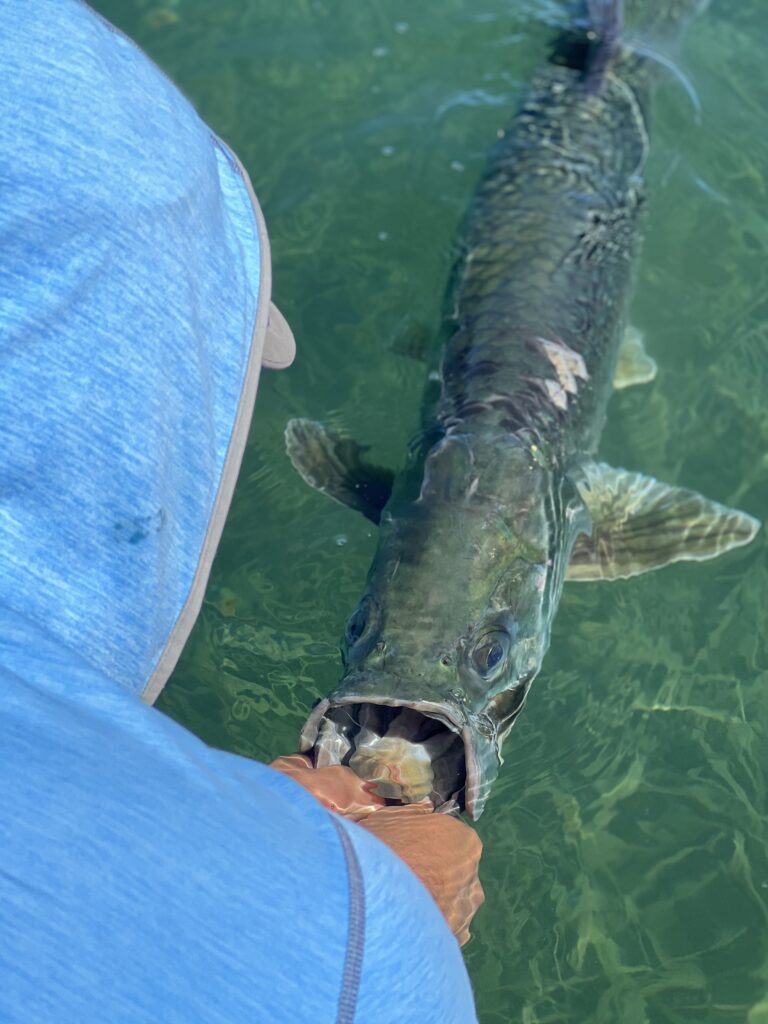Now Booking For Late 2025 & 2026 Season

At No Name Lodge, every day on the water is a mix of preparation, presentation, and just enough chaos to keep things exciting. Guests often ask two big questions: what fly should I throw? and what should I bring with me on the skiff?
Jake—your favorite fishing guide—has thoughts on both. We’ll let him take it from here.
Anglers have been debating fly choice for generations. It’s almost as classic as “chicken or the egg.”
Here’s the truth: tarpon are quirky. They like to look up at flies, and they like them moving a certain way. In Puerto Rico, most generic poon patterns will get the job done. It’s not really about having the magic fly—it’s about the strip and the placement.
Some days, the fish make you feel like tarpon Jesus reincarnated—they’ll eat anything, even a bad cast. Other days, every tiny mistake matters: pausing too long mid-strip, dropping your line, letting the fly sit too long. That’s when most anglers blame the fly. But let’s be honest—it’s usually the Indian, not the arrow.
So instead of overthinking patterns, focus on your cast, strip, and presentation.
When it comes to leaders, I’m a bit of a nerd. Knots, tapers, little details—they matter. But here in our fishery, it’s actually pretty simple.
For tarpon (10–11 wt):
That’s it—you’re cooking with peanut oil.
For permit (9–10 wt):
No breakaway sections are needed here—unlike other fisheries, we don’t have a shark problem.
And for those who want to fish IGFA leaders? Power to you. But on days when we’re putting 20+ fish in the air, don’t expect me to spend half the morning retying them for you.
Here are a few things you might not think of but will thank yourself for packing:
The last two matter more than any fly in your box.
Flies, leaders, gear—it’s all part of the game. But don’t forget: presentation and teamwork with your guide are what really put fish in the air. Keep it simple, stay prepared, and let the silver kings teach you a few lessons along the way.
Tight lines,
Jake
Your Favorite Fishing Guide
We want every guest at No Name Lodge to feel confident stepping onto the skiff. Whether it’s dialing in your leader, packing the right essentials, or learning how to strip a fly so a tarpon can’t resist it, our guides are here to walk you through it all.
Ready to test your skills in Puerto Rico? Plan your trip with No Name Lodge today.
We will cast you a line regarding expansions, improvements, and exclusive seasonal rates & deals.